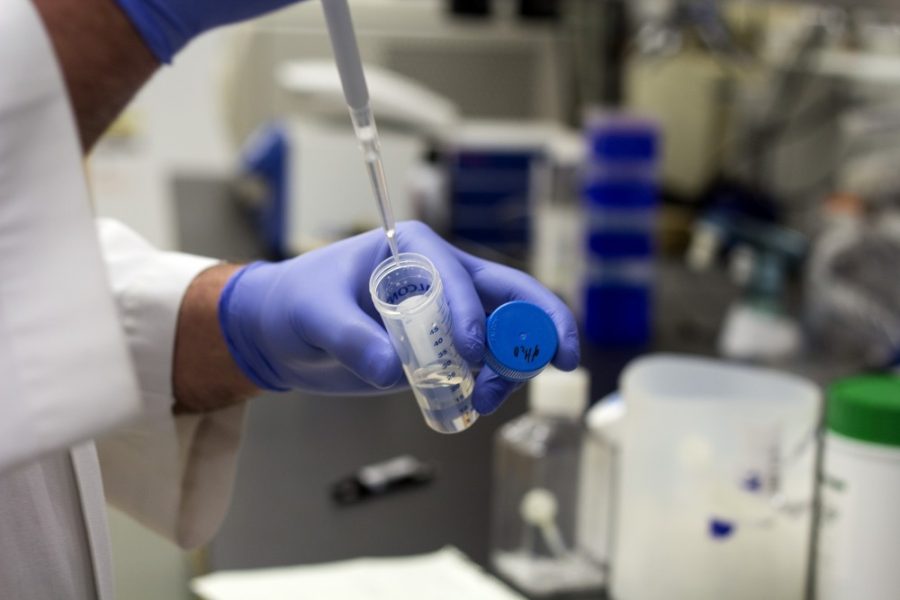Two years ago, life was very different. It was my senior year of high school, which had turned into a year of full-time online school, and I was itching to graduate. I rarely left my house, and when I did, it was only to go grocery shopping. Afterwards, I would enter through the garage and disinfect everything, including myself, with a sanitizer, Clorox wipes, and diluted bleach at our makeshift COVID-19 sanitization station. Only after extensive cleaning would I enter the house. Immediately I would shower and change my clothes to cleanse the outside world of my skin. With it already being a year into the lockdown and quarantine, I wholeheartedly believed that COVID-19 would dominate the world at the same rate for another three to five years. But look at us now. It is 2023, and we all live, travel and work similarly to before, without fearing the outside world, all due to vaccines.
So how did we get to where we are now so quickly?
Getting a vaccine even by the summer of 2021 seemed highly optimistic, but Pfizer, with BioNTech firm, created the first thoroughly tested immunization to be approved for emergency use by Dec. 2 2020. This changed the precedent for vaccines, as the timeline was incredibly fast for development without compromising safety. This rapid development of COVID-19 vaccines can also be accredited to the prior years of extensive research on SARS and MERS.
Previous work on SARS gave way to SARS-CoV-2 research for many, including Gregory Thatcher, Ph.D. professor of pharmacology and toxicology at the R. Ken Coit College of Pharmacy. Starting in Chicago, Thatcher and his drug discovery team began researching PLpro protease inhibitors for SARS-CoV-2. One of the team members had previously worked on PLpro during the SARS outbreak. Due to this previous knowledge, Thatcher’s drug discovery group was able to screen for small molecule inhibitors of the SARS-CoV-2 PLpro and established the project within weeks instead of months. The project was then moved and continued at the University of Arizona.
Trying to understand a virus is very similar to a computer virus.
“A computer virus is a very small piece of code that inserts itself into a program and then replicates, and a virus is a very small piece of code that inserts into the DNA replication machinery of the cell to replicate and to cause damage at the same time,” Thatcher explained.
A virus like SARS-CoV-2 produces a very small number of proteins, which means a small number of targets for therapeutics.
Only two of these proteins, Mpro and PLpro, fall under a type of enzyme known as a cysteine protease. Now the Mpro protease has been therapeutically targeted by Paxlovid, the Pfizer antiviral.
The PLpro protease has at least two prominent roles scientists are trying to inhibit.
1). The SARS-CoV-2 virus requires the PLpro to process and modify a viral polypeptide by chopping up the protein at certain places post-translation to function properly. The Mpro has a similar function, only chopping the viral protein at different locations to activate it.
2). PLpro protease has evolved to target and modify human proteins. This alteration blocks the human immune response from attacking the virus, letting the virus replicate and go unscathed.
The goal is to inhibit the PLpro protease so that it does not generate the functional viral proteins needed for replication and will not inhibit an immune response from the host.
“So there is a hope that with PLpro that when inhibiting both of these aspects, you will hit the virus at its greatest vulnerability,” Thatcher said.
The research began with PLpro enzyme assays to assess enzyme activity and screening for around 30,000 compounds to inhibit the enzyme activity. PLpro is difficult to target due to its tricky active site. Therefore, it has very few ‘hits’ — compounds in the screening that are active and validated after the testing. Screening for hits that inhibit the enzyme is the starting point. It is also necessary to have a human cell model that the live SARS-CoV-2 virus will infect and an animal model of the effects of the virus. A hit compound must be optimized to increase potency. The potency aids in the effectiveness against the virus and to prevent any room for mutations and resistance. Next is acquiring good bioavailability, which is when the concentration of the drug in the plasma is at a sufficient level to completely kill the virus.
“So you need to have all of these components, which means you are doing a lot of medicinal chemistry supported enzyme and cellular assays,” Thatcher said.
Thatcher’s lab has tested small molecules in mice that inhibit the PLpro protease’s function, preventing virus replication. Still, the same characteristics are not applicable when creating a pill that will work in humans. Through other approaches, the lab has small molecules that have a big jump in potency within the PLpro inhibitor drug, but it is not that simple, as one must look at safety as well. Even though the course of the medication may only be for a week or two, in particular, older people and the immunocompromised may have greater sensitivity.
“So if you are treating healthy young people, you obviously have to have safe drugs, but the threshold can be even higher when treating the elderly and the vulnerable,” Thatcher said.
To ensure levels of safety, one of the many aspects the Thatcher lab examines is interactions with over seventy human targets that could potentially increase toxicity.
“Before getting into clinical trials, you are trying to de-risk the drug, using cellular and animal data to try to ensure the drug will be safe and efficacious in humans. You can’t just say, ‘Oh, look, I have this potent inhibitor, let’s test it in humans.’ You have to start incorporating bioavailability, safety and toxicology early on; otherwise, you will get something that works brilliantly in a test tube but has no real value,” Thatcher said.
The Thatcher lab may be testing the drug with human clinical trials next year (2024), but an issue may be the lack of participants for the study, as there is a decrease in positive COVID-19 cases. However, regardless of whether the clinical trials are completed, this research is significant for the next viral outbreak or pandemic.
The lab has produced encouraging results with the invention of the PLpro protease inhibitor. It has exclusively licensed the technology to Sunshine Biopharma Inc. to take the technology for further development. This license grants Sunshine Biopharma worldwide rights pertaining to PLpro protease inhibitors of SARS-CoV-2 developed by the researchers.
Follow the Daily Wildcat on Twitter










